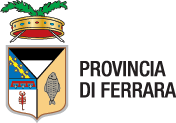The city walls
... defensive systems of the Middle Ages and the Renaissance and make use of all the techniques of defence used in the 1400s and 1500s: city gates, bastions, large towers, gun slots and embrasures. Time has transformed these walls into a place for meeting friends, practicing sport and recreation, where people can relax as if in a tranquil garden.
Most of the walls to the north were built between 1493 and 1505 and are marked out by the smaller semicircular towers and by the long “patrol path” used by the sentries. At the north-west end of the walls stands the Torrione del Barco, an example of military architecture between the 1400s and 1500s. Distinguishing features include the Porta degli Angeli to the north and, to the east, the Torrione di S. Giovanni, whose circular structure is typical of Renaissance military architecture. The stretch of walls to the east was conceived by Alfonso I d’Este, between 1512 and 1518. Distinguishing features include the artificial hill of the Baluardo della Montagna, where at the end of Via Marco Polo a 17th-century garret for guarding the former Porta di San Giorgio can still be seen. The southern fortifications are characterised by four imposing bastions in the form of the “ace of spades” built on the orders of Alfonso II between 1575 and 1585. At the southern entrance of the walls stands Porta Paola (1612). In the stretch of wall that leads from the gate to the west, there are two bastions and a statue of Pope Paul V who commissioned the 17th-century defensive works.







